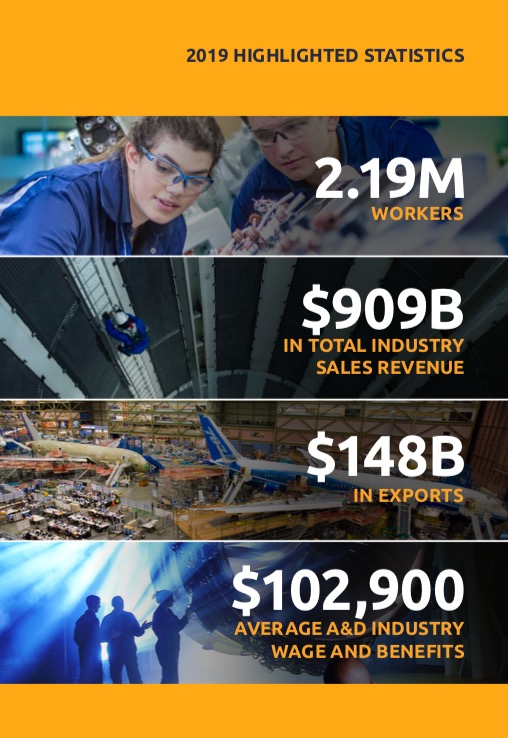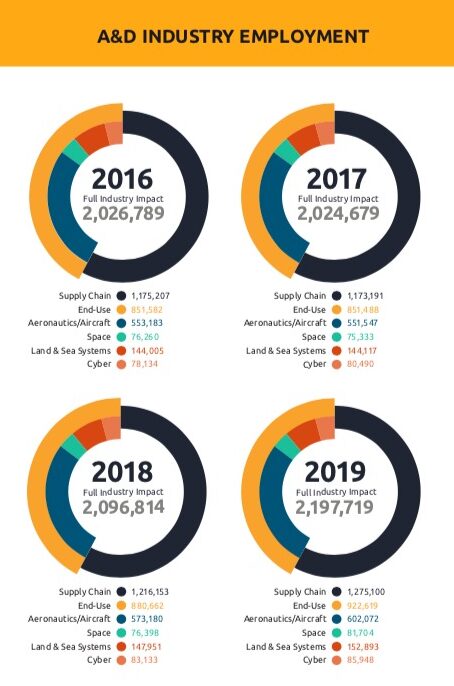
16 Sep, 2020
U.S. 2020 aerospace and defense report shows why global conflicts and crises are here to stay
This report should be must-reading in the Travel & Tourism sector. It proves that the benign sounding “aerospace and defense” (read: armaments and weaponry) industry is a major driver of jobs and economic livelihood in the U.S. If this is expanded worldwide, the numbers become even more sinister. To survive economically, the “aerospace and defense” industry must boost sales, which means conflicts must continue somewhere or another. The implication for Travel & Tourism, the so-called “industry of peace”, is that the pursuit of global peace is an illusory pipe-dream. Conflicts and crises are here to stay, and will continue to destabilise the world. Here’s the full press release..
ARLINGTON, Va., 15 September 2020, BUSINESS WIRE – The COVID-19 pandemic and the subsequent dramatic decrease in global air traffic has presented the aerospace and defense (A&D) industry with an extraordinary challenge. Building on the success of 2019, it is a challenge our industry is poised to meet, according to “2020 Facts and Figures: U.S. Aerospace & Defense.” This in-depth analysis, developed by the Aerospace Industries Association (AIA) with the support of IHS Markit, provides a snapshot of the industry’s global leadership and its strong contributions to the U.S. economy, national security, and innovation in 2019 and considers the impact of the pandemic on our industry in the first half of 2020.

At the heart of the A&D industry’s success are the more than two million highly skilled workers who earned an average of $102,900 in wages and benefits—46 percent higher than the national average for all workers. According to the analysis, these employees made 2019 one of the best years on record for the industry with sustained growth in nearly every metric, including an economic footprint that represented 1.8 percent of total U.S. Gross Domestic Product (GDP). Sales in 2019 amounted to $909 billion, and exports were valued at $148 billion. The extensive, shared supply chain increased output by nearly 7 percent from 2018 to produce the vital and innovative products that support the commercial aerospace market, our warfighters, as well as partners and allies around the world.
“The strong growth and significant success industry achieved in 2019 was driven by our exceptional employees whose commitment to lifting America to new heights is matched by their contributions to our country’s economic and national security,” said AIA President and CEO Eric Fanning. “As our country and the world face an uncertain future due to COVID-19, our workforce is leveraging its unique talents and unparalleled capabilities to help return industry to 2019 levels, while also fueling our country’s recovery and bolstering our competitiveness on the global stage.”
The COVID-19 crisis has already led to dramatic changes in the industry. Particularly hard-hit civil aviation manufacturers estimate production will drop by 50 percent in 2020 and could result in more than 200,000 job losses. As a whole, analysis suggests the aviation market may take nearly a decade to recover.

The impacts also extend to the industry’s defense sector due to significant impacts on the shared supply chain. In addition, defense spending will likely experience downward pressures from reduced tax receipts during the recession, heightened competition among federal priorities, and growing concern about deficit spending.
As the full scope of the pandemic’s impact continues to come into view, it is clear that steps taken by companies to safeguard the health and safety of employees coupled with government action to save jobs is helping preserve the highly-skilled A&D workforce and its unique capabilities. Increased contract progress payments for defense companies that was flowed through the shared supply chain combined with relief and support measures in the Coronavirus Aid, Relief, and Economic Security (CARES) Act have been critical to providing the stability and cash flow that companies of all sizes need, particularly small businesses.
Resilience will be key to the recovery of the Aerospace and Defense industry. Additional bipartisan government action will be necessary to ensure this resilience. Two of the most promising policy options include a payroll cost-share proposal aimed at keeping at-risk workers on payroll and sustained and stable investment in defense that will provide support to the shared supply chain and the overall workforce. These additional efforts would also help ensure America’s continued leadership in aerospace innovation along with continued progress in the modernization and readiness our troops need to meet new and emerging threats.
For more than 100 years, the A&D industry has risen to help our nation overcome great challenges. That commitment endures today as we work with our country’s leaders to set out on the road to recovery.
For more information, please visit: http://aiafactstg.wpengine.com/.



Liked this article? Share it!